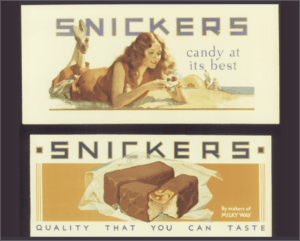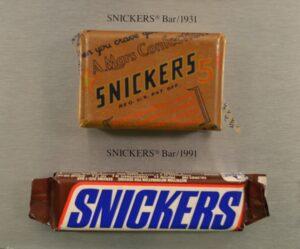We celebrate World Chocolate Day!
It’s hard, even painful, to imagine a world without chocolate treats. World Chocolate Day is celebrated worldwide on July 7th, paying tribute to the sweet treat that has enchanted millions for hundreds of years. To mark the occasion, we’ve gathered five surprising facts about one of the most famous sweets, the Snickers® chocolate bar.





World Chocolate Day is celebrated every year at the beginning of July, supposedly to commemorate the first appearance of chocolate in Europe around 1550. Although the exact date is disputed, the holiday has now become a global event, with special traditions and records. We couldn’t find a more appropriate time to give you a taste of the history of one of the most famous chocolate bars.
Created by Mars in 1930, the Snickers® bar has been conquering the world for decades with its unique combination of nougat, caramel, peanuts and milk chocolate. According to Time magazine, it is now one of the most popular sweets in the world. Here is the success story of Snickers® – summarized in five surprising facts:
The drama behind the name
Snickers® is named after a horse. The Mars family’s favorite horse died shortly before the new product was introduced, so the candy was named in honor of the animal. It is interesting to note that in the United Kingdom it was sold under the name Marathon for a long time, as “Snickers” reminded consumers of the word “knickers” (underwear). It was only in 1990 that they switched to the original name, and then in 2024 Marathon was re-released in a limited retro edition, arousing great nostalgia among British consumers.
A candy with a galactic reputation
In 1975, a team of astronomers unofficially named a newly discovered faint object – a dwarf galaxy candidate – Snickers. The discovery coincided with the explosive growth in the popularity of the chocolate bar, and this is exactly what scientists thought at that moment.
Supporting the world of sports and entertainment
The Snickers® brand has been actively supporting international sporting events for many decades. It was already an official sponsor of the 1984 Los Angeles Olympics and was also a partner of leading football and athletics events.
Unforgettable advertising campaigns
One of the secrets of the brand’s success lies in its special advertising campaigns. Among these, the 2010 “Are You Hungry?” campaign, starring Betty White, which was launched during the Super Bowl. In the British version of the campaign, Rowan Atkinson played a clumsy kung fu master in an authentic Chinese setting. The slogan quickly gained global popularity and became part of pop culture, thereby reinforcing the brand’s main message: it can be the perfect snack for everyday life.
Nearly 100 years of chocolate history
Today, Snickers® is not just a popular candy, but a true cultural icon, present in films, series and in the everyday lives of millions. The candy, which has represented energy, joy and a taste known worldwide for 95 years, continues to enjoy unwavering popularity.
Let’s celebrate the long journey of chocolate, which started in 16th-century Europe and has now become a global passion. World Chocolate Day is a great opportunity to reward ourselves with a bar or recall its rich history.
Related news
Mars Commits €18.5m To Sustainable Rice Sourcing
🎧 Hallgasd a cikket: Lejátszás Szünet Folytatás Leállítás Nyelv: Auto…
Read more >The heritage of flavors, tradition and innovation – Stühmer’s story that sweetened Hungary
🎧 Hallgasd a cikket: Lejátszás Szünet Folytatás Leállítás Nyelv: Auto…
Read more >We took you on a flight! (Part 2)
🎧 Hallgasd a cikket: Lejátszás Szünet Folytatás Leállítás Nyelv: Auto…
Read more >Related news
Christmas shock in commerce: for the first time, we can pay with bank cards in fewer places
🎧 Hallgasd a cikket: Lejátszás Szünet Folytatás Leállítás Nyelv: Auto…
Read more >Hungarian Confectionery Manufacturers Association: trends in 2025 and prospects for 2026
🎧 Hallgasd a cikket: Lejátszás Szünet Folytatás Leállítás Nyelv: Auto…
Read more >Most grocery chains will be open until noon on December 24th
🎧 Hallgasd a cikket: Lejátszás Szünet Folytatás Leállítás Nyelv: Auto…
Read more >






